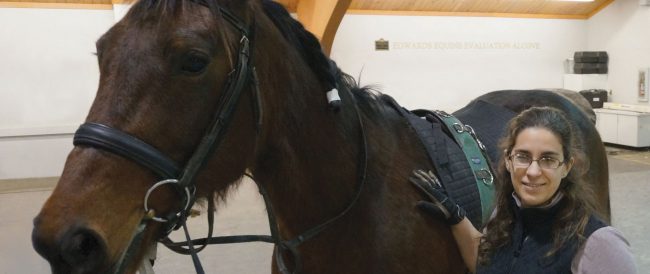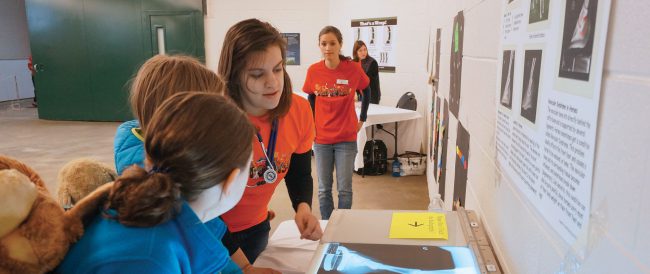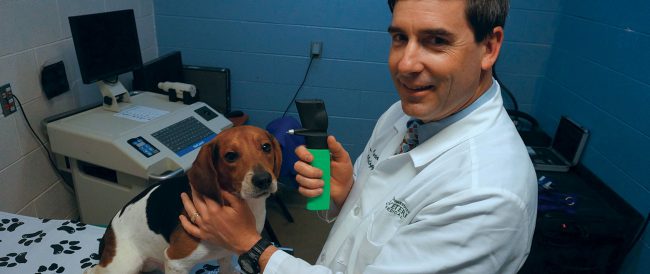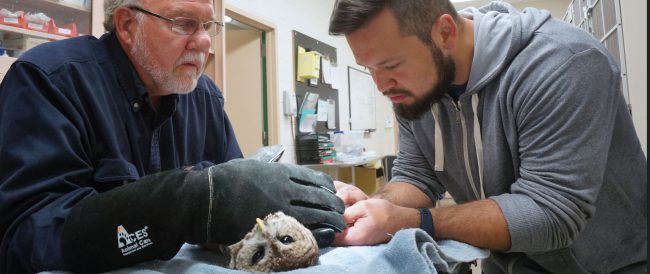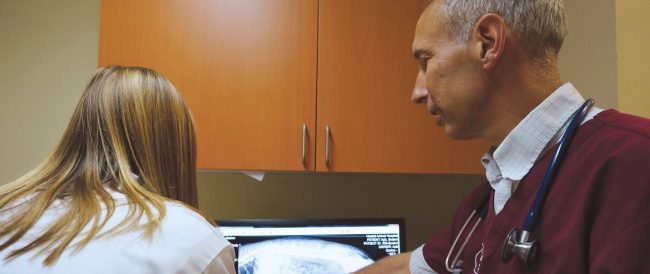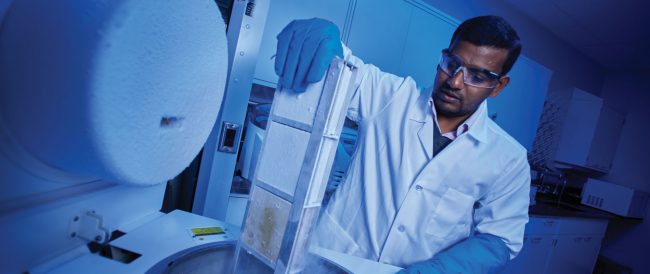 Read More
Read More
The Diagnostic Center for Population and Animal Health, a service unit of the Michigan State University College of Veterinary Medicine, will now be the Michigan State University Veterinary Diagnostic Laboratory (VDL). This name change, effective June 1, 2017, will better communicate the function and mission of the unit. The decision to pursue the change was made with the input of laboratory clients, stakeholders, and employees.
“At our heart, we are a veterinary diagnostic laboratory. We are happy to announce this name change, which we feel will better resonate with current and prospective clients, as well as our government and animal health community stakeholders,” says John Baker, dean of the College. “We will continue to provide our clients with the quality diagnostics they rely on to make critical decisions about the treatment of animals entrusted to their care. At the same time, we remain committed to build and expand our partnerships in the area of One Health.”
In March, the VDL was promoted to a Level 1 laboratory in the National Animal Health Laboratory Network (NAHLN). A cooperative effort between two United States Department of Agriculture (USDA) agencies and the American Association of Veterinary Laboratory Diagnosticians (AAVLD), NAHLN is a nationally coordinated network of federal, state, and university-associated laboratories that provide animal health diagnostic testing to detect biological threats to the nation’s food animals, thus protecting animal health, public health, and the nation’s food supply.
Prior to 2016, there were twelve laboratories designated as NAHLN Core laboratories; at that time, MSU’s Laboratory was a member laboratory. Beginning in 2016, all NAHLN laboratories were transitioned to a new structure (Levels 1, 2, 3, affiliate, or specialty) based on a laboratory capability and capacity assessment and data verification. In 2016, the VDL was designated a Level 2 laboratory.

Based on the 2017 assessment, the VDL met the criteria to be promoted to a Level 1 laboratory. Relevant factors included a full AAVLD accreditation, more than 1,000 square feet of functional and fully commissioned Biosafety Level 3 laboratory space, a fully functional lab information management system that can actively message test results to NAHLN, 5 or more individuals authorized to perform foot and mouth disease (FMD) and avian influenza (AI) testing, surge capacity for greater than 750 tests/day for FMD or AI, NAHLN approval for testing 5 or more diseases, and testing more than 10,000 NAHLN surveillance samples per fiscal year.
While there are more than 60 laboratories in the network, there were only 11 Level 1 laboratories in 2016. The number of labs per designation for 2017 has not yet been released. However, earning status as a Level 1 laboratory will result in both increased responsibility to the network and USDA funding. Additionally, Dr. Rachel Reams, director of the VDL, has been nominated by AAVLD to serve on the NAHLN Coordinating Council. “We are honored to be recognized as a Level 1 laboratory. This change in status reflects the quality of our testing, our commitment to having staff authorized to test for AI, FMD, chronic wasting disease, scrapie, swine influenza, and other agents that pose a significant risk to agriculture, the level of surveillance testing we provide for the region, and our active involvement in NAHLN-related activities,” says Reams. “Current surveillance for chronic wasting disease here in Michigan and AI outbreaks in Asia and Europe as well as the United States underscore the need for laboratories such as ours to protect animals and the public from biological threats.”





